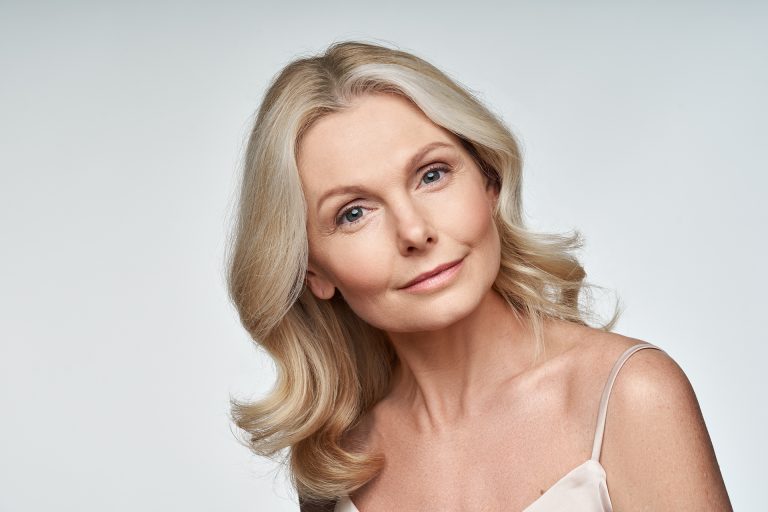The Science of Aging Neck: Why Time Takes a Toll on Your Neckline
The neck is one of the first places that many people show signs of aging. While there are a multitude of products on the market that claim to address facial wrinkles and other signs of aging, very few products address obvious problems related to the neckline: wrinkles, loose skin, and muscle laxity.
What happens to our necks as we age? Why is the neck one of the first places that signs of age appear, and what can we do to address these issues?
The Physiology of Neckline Changes
Unlike other areas of the body, the skin of the face and neck is almost constantly exposed to environmental stressors, including ultraviolet radiation and pollutants. Furthermore, as we age, collagen production diminishes, and the face and neck are some of the first areas where this lessening of collagen becomes visible. Skin loses its elasticity and tone, and wrinkles develop.
The neck in particular, however, may show signs of aging even earlier than the face. This is because the muscles of the neck are used very differently than those of the face. While facial muscles tend to be used individually to promote a wide range of movement that produces hundreds of expressions, neck muscles are used in large groups to promote a relatively limited range of motion. As muscles become more lax, the damage is quickly apparent. Furthermore, today’s lifestyles, which often involve hours of sedentary occupations sitting with the head bent forward over a computer screen, may actually make this problem worse.
Many people complain about three specific problems that make the neck area unsightly:
- Vertical muscle bands. In the front of the neck is a long, flat muscle called the platysma muscle. As we age, this muscle tends to pull apart and roll up into vertical bands. These bands extend from the chin to the lower part of the neck on both sides of the throat. In younger patients, these bands tend to be hidden by subcutaneous fat deposits that smooth the skin. In older people, however, they may become visible. This is particularly true in petite patients with very low body fat.
- Excess fat deposits. Some patients have the opposite problem. For them, too much subcutaneous fat buildup gives them a dreaded “double chin” look. This may not have anything to do with their weight, but may be a function of idiosyncratic fat deposition. In other words, a patient may simply be someone who tends to deposit fat around the neck. If this is the case, the excess fat deposits may build up to cause stretching of the skin which can then lead to sagging and wrinkling. This can also happen if an overweight patient loses a significant amount of weight.
- Sagging skin. The most common problem related to neck aging is sagging skin. As we age, our skin simply is not as elastic as it once was. It loses the ability to bounce back after stretching. This can lead to “jowls” or sagging, particularly under the jaw line, and even loose skin at the base of the throat that gives a lapped appearance to the neck.
How To Treat Sagging Neck
Fortunately, there are some relatively simple ways to treat sagging neck muscles and skin. The most common procedure is a platysmaplasty or a neck lift. This procedure involves surgically removing excess skin and fat from the neck and providing a smoother profile with removal or reduction of wrinkles.
While necklifts are not the same as facelifts, they are often performed together. Necklifts can also be combined with other procedures such as eye lifts and fillers to target specific areas affected by aging. With the help of a plastic surgeon, the patient can create a unique plan to attack all areas of concern and focus only on the places that specifically need enhancement. It is important to work with a plastic surgeon with a great deal of experience in cosmetic surgery. The results of any surgery that involves the neck or facial area will be highly visible, so it is critical to have the advice of a professional when planning the scope of this type of intervention.
What Happens During a Necklift?
At your consultation, the first thing your surgeon will want to know about is your medical history. It is very important for you to be honest, particularly about whether you have smoked now or in the past, or whether you have suffered from conditions such as diabetes, high blood pressure or cardiovascular disease, or blood clotting disorders. Your surgeon will also ask about your tendency to scar; if you have any examples of scars, your surgeon will want to look at them to determine how your skin tends to heal.
Your surgeon will also consider your skin type, age and ethnic background when determining the best course of action for surgery on your neck area. Finally, your surgeon will carefully explain the expectations you should have from the procedure. It is very important to manage your expectations realistically so that you are not disappointed with or surprised by the outcome of your surgery.
Once you and your doctor have decided that you want to go ahead with the necklift, your surgical team will schedule your procedure. Professional team members will talk with you about options for anesthesia, where your surgery will happen, and how to prepare for your surgery date. It is important to follow all instructions carefully to get the best possible outcome.
Necklifts are done on outpatient basis. Most necklifts take several hours. Small incisions are made behind the ear and under the chin. The surgeon tightens muscles, removes excess fat and skin, and then closes the incisions. After this, pressure may be applied for some time under the chin to speed the healing process.
There may be slight bruising for some time after surgery, but pain is usually minimal. Scars should be hidden behind the ears or under the chin, so most people having a necklift will not have obvious signs.
Once you have recovered, generally in 2-4 weeks, you can begin to enjoy your beautiful, more youthful appearance!
At The Aesthetic Center, we work with our patients to find the right combination of treatments, surgeries, or procedures to produce the desired outcomes. We want to help you feel more confident and beautiful in your body! Give us a call today to schedule your consultation.







